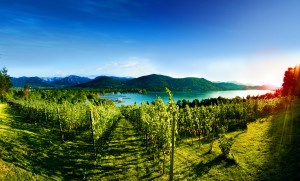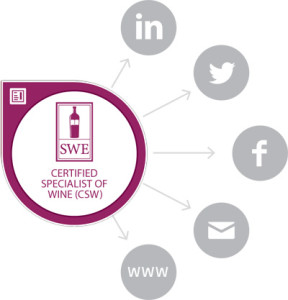After several years of application status, the wine region of Cebreros has (as of April 11, 2019) been recognized as a Vino de Calidad Indicación Geográfica (VCiG) by the European Union.
In the Spanish system of wine classification, VCIG wines are included in the protected designation of origin (DOP/PDO) tier. The VCIG classification is seen as a “stepping stone” to the higher designation of origin (DO) status. VCIG areas are considered eligible for promotion to DO after five years.
The new appellation is located in the southern section of the province of Ávila, which is itself located in southern section of the autonomous community of Castilla y León. The region stretches across 35 municipalities and includes a portion of the Sierra de Gredos mountain range as well as the valleys of the Alberche and the Tiétar Rivers (both tributaries of the Tagus/Tejo).
The area has a long history of wine production, dating as far back as 1273 when the oak forests of the area began to be cleared to make room for agriculture, including vineyards and wine production. These days, the area has over 375 hectares (927 acres) planted to vine. 70% of the vineyards are Garnacha Tinta (red Grenache), sometimes known by the local name “Gironet.” The remainder is mostly Albilla Real (a white variety).
The VCIG is approved for the production of still (non-sparkling) wines in red, white, and rosé. Some of the details of these wines are as follows:
- Red Wines: Must be produced from a minimum of 95% Garnacha Tinta, should be “clear in appearance, with cherry-red tones and touches of violet;” minimum 13% abv
- White wines: Must be produced using 100% Albillo Real grapes, should be “clear and brilliant, with a fruity fragrance;” minimum 12% abv
- Rosé wines: Must be produced from a minimum of 95% Garnacha Tinta, should be “clear and brilliant, and their color ranges from pale pink to strawberry-pink or raspberry;” minimum 12% abv
The VCIG Cebreros is not located within any of Spain’s other protected designations of origin (PDOs) for wine. It is, however, located within the larger Vino de la Tierra-Castilla y León appellation (a protected geographical indication, or PGI) that covers the entirety of the autonomous community of Castilla y León.
Welcome to the world, VCIG Cebreros!
References/for more information:
- http://dopcebreros.com/
- Official Journal of The European Union for April 11, 2109: https://eur-lex.europa.eu/legal-content/EN/TXT/?uri=OJ:L:2019:100:TOC
- VCIG Cebreros
- Click here for a map of the VCIG Cebreros
Post authored by Jane A. Nickles, your blog administrator


























